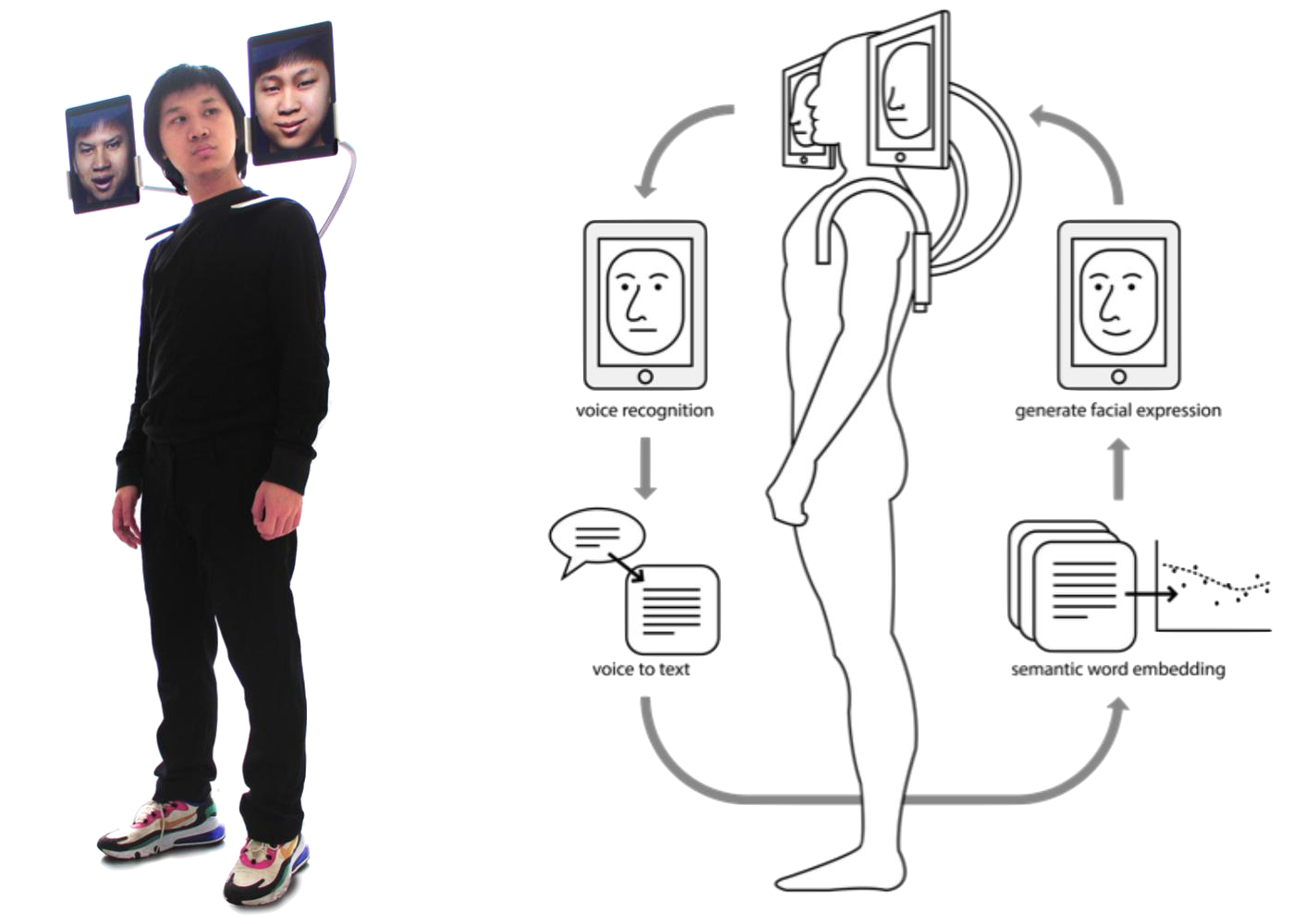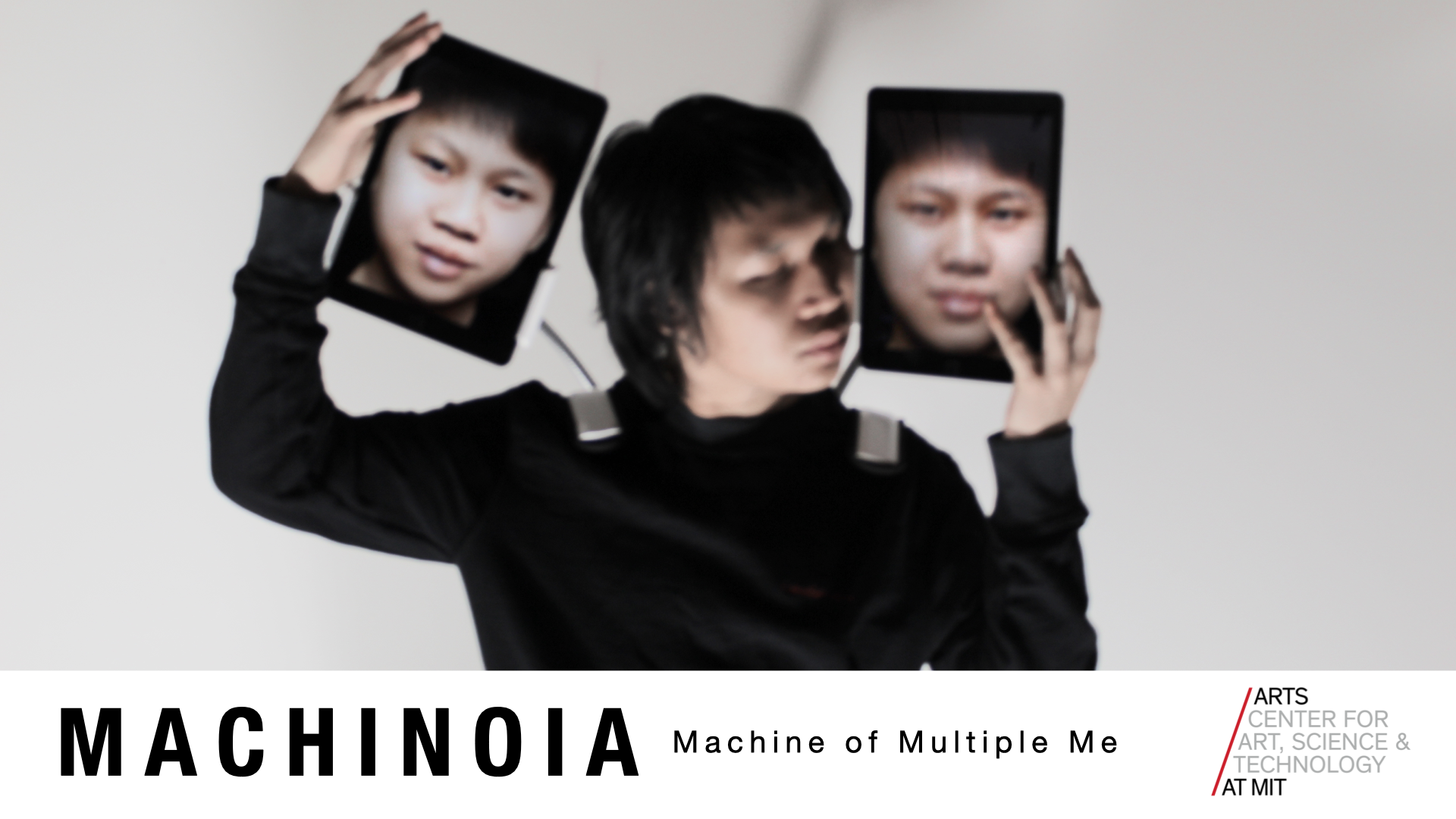Machinoia, a wearable installation that corporealizes into two bodily extended heads: who you once were, and who you'll eventually become. Credit: Fluid Interfaces
Our body and mind relate in ways which are extraordinarily enigmatic and seemingly incomprehensible. Recent findings exemplify this by showing not just that the mind can transition between multiple bodies, but also that the body can host multiple minds. Inspired by these findings and ancient ideas of polycephaly—the condition of having more than one head—we explored the idea of augmenting oneself with multiple minds. As a manifest of this, we present Machinoia, a wearable installation that corporealizes into two bodily extended heads: who you once were, and who you'll eventually become. We used a generative adversarial network to synthesize life-like human faces as well as using computational methods to extract the attitude models for these faces from personal longitudinal social media data. All together, we extrapolate the model and create the "artificial personal intelligence," bringing to life past and future selves. In doing this, we hope to enhance the wearer's recalling of past and potential core values, and guide them towards a more holistic understanding of themselves and their future.
TIME: October 2019
AUTHORS: Pat Pataranutaporn, Valdemar M. Danry, Pattie Maes
AWARDS: Directors Art Grant, Council for the Arts at Massachusetts Institute of Technology
KEYWORDS: Human-Machine Integration, Multiple Mind Systems, Wearable Technology, Human Enhancement, Philosophy of Mind.
SKILL: Machine Learning, Natural Language Processing, iOS Development, Digital Prototyping
AUTHORS: Pat Pataranutaporn, Valdemar M. Danry, Pattie Maes
AWARDS: Directors Art Grant, Council for the Arts at Massachusetts Institute of Technology
KEYWORDS: Human-Machine Integration, Multiple Mind Systems, Wearable Technology, Human Enhancement, Philosophy of Mind.
SKILL: Machine Learning, Natural Language Processing, iOS Development, Digital Prototyping

A full size view and diagram of the Machinoia system. The process begins when the wearer talks to the heads. The speech is then recognized and processed into text, which then uses semantic word embedding to extrapolate an attitudal response for the head - expressed through facial animation. Credit: Fluid Interfaces


